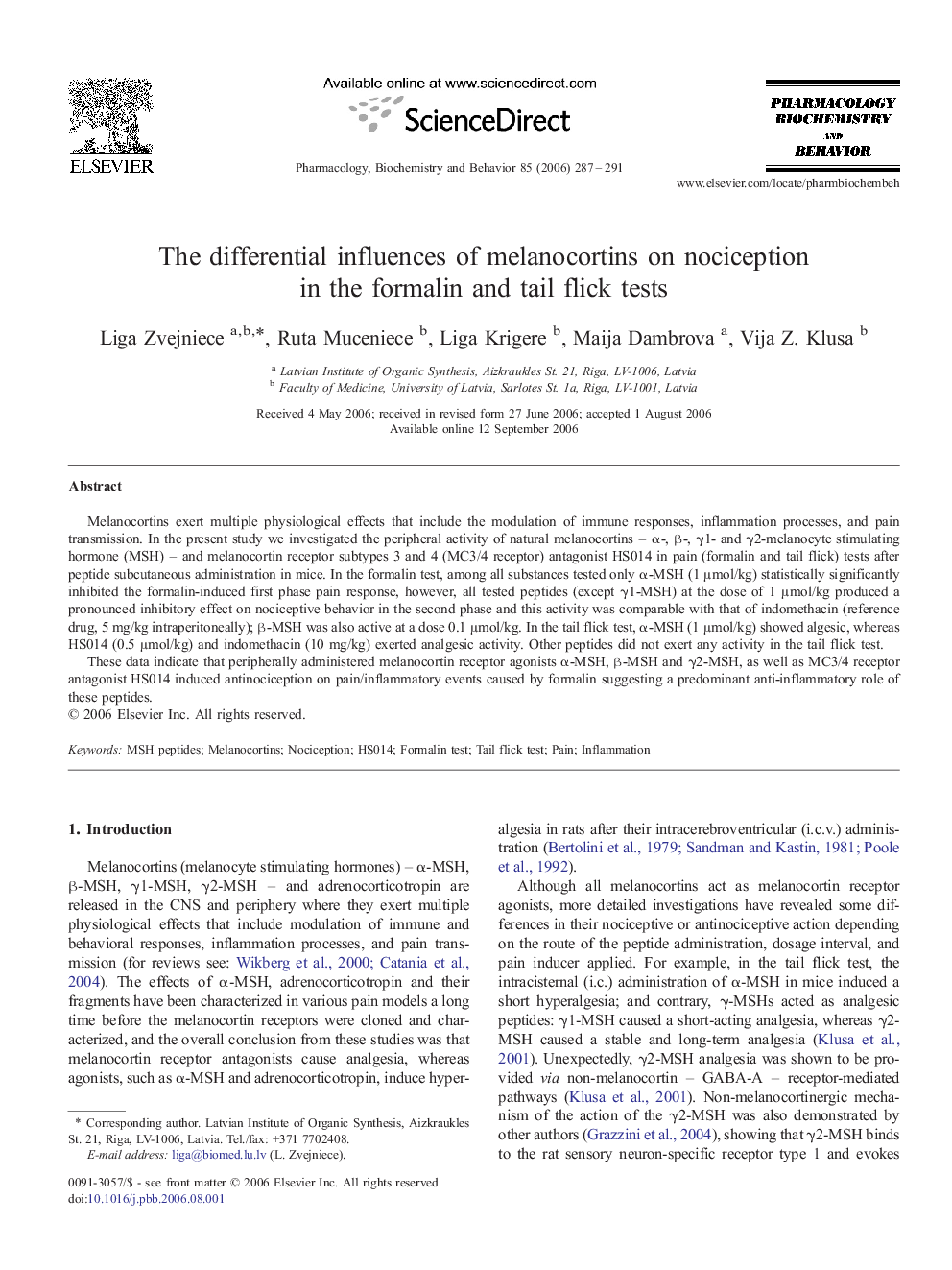| Article ID | Journal | Published Year | Pages | File Type |
|---|---|---|---|---|
| 2014178 | Pharmacology Biochemistry and Behavior | 2006 | 5 Pages |
Melanocortins exert multiple physiological effects that include the modulation of immune responses, inflammation processes, and pain transmission. In the present study we investigated the peripheral activity of natural melanocortins – α-, β-, γ1- and γ2-melanocyte stimulating hormone (MSH) – and melanocortin receptor subtypes 3 and 4 (MC3/4 receptor) antagonist HS014 in pain (formalin and tail flick) tests after peptide subcutaneous administration in mice. In the formalin test, among all substances tested only α-MSH (1 μmol/kg) statistically significantly inhibited the formalin-induced first phase pain response, however, all tested peptides (except γ1-MSH) at the dose of 1 μmol/kg produced a pronounced inhibitory effect on nociceptive behavior in the second phase and this activity was comparable with that of indomethacin (reference drug, 5 mg/kg intraperitoneally); β-MSH was also active at a dose 0.1 μmol/kg. In the tail flick test, α-MSH (1 μmol/kg) showed algesic, whereas HS014 (0.5 μmol/kg) and indomethacin (10 mg/kg) exerted analgesic activity. Other peptides did not exert any activity in the tail flick test.These data indicate that peripherally administered melanocortin receptor agonists α-MSH, β-MSH and γ2-MSH, as well as MC3/4 receptor antagonist HS014 induced antinociception on pain/inflammatory events caused by formalin suggesting a predominant anti-inflammatory role of these peptides.
